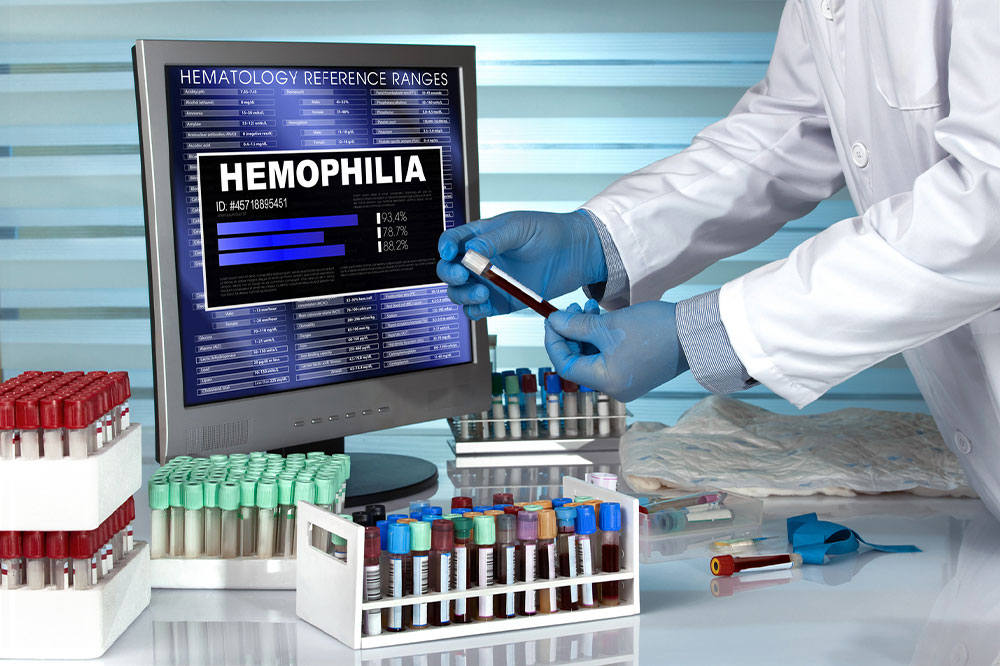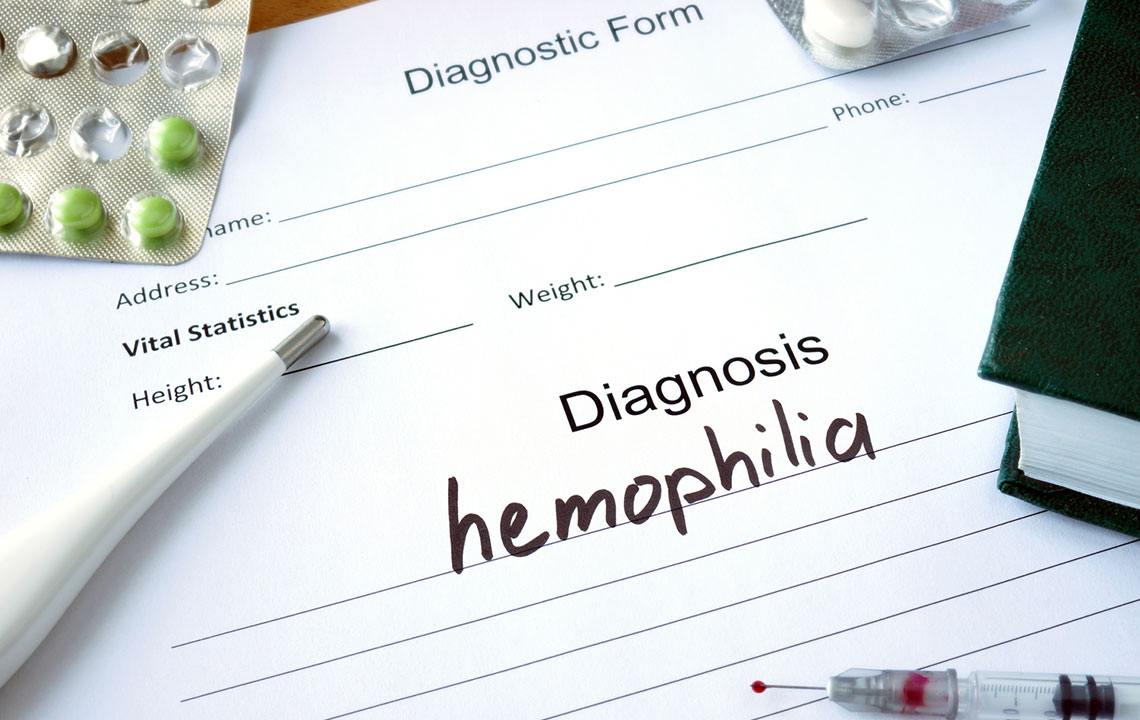Comprehensive Strategies for Managing Hemophilia and Ensuring Optimal Health
This comprehensive article explores essential strategies for managing hemophilia, emphasizing nutrition, oral hygiene, safe exercise, injury prevention, and regular medical checkups. It offers practical tips to help individuals with hemophilia maintain health, prevent complications, and improve quality of life through lifestyle adjustments and medical care. The guide highlights the importance of a balanced diet, proper safety measures, and routine health monitoring, supporting patients in leading active, healthier lives despite their condition.

Comprehensive Strategies for Managing Hemophilia and Ensuring Optimal Health
Hemophilia is a hereditary bleeding disorder characterized by the deficiency of clotting factors in the blood, which leads to prolonged bleeding episodes. This condition, often present from birth, can significantly impact an individual's quality of life if not properly managed. Hemophilia primarily affects joints such as knees, elbows, and ankles, causing internal bleeding that may result in pain, swelling, and long-term joint damage. While there is currently no definitive cure for hemophilia, advancements in medical treatment and lifestyle modifications have made it possible for individuals to lead active and healthy lives. Effective management involves a combination of proper medical care, lifestyle adjustments, and safety precautions. In this extensive guide, we will explore key strategies to maintain health and well-being for those living with hemophilia, covering nutrition, oral hygiene, physical activity, safety measures, and routine medical care, all aimed at reducing bleeding episodes and improving quality of life.
Adopt a Nutritious and Well-Balanced Diet
Nutrition plays a vital role in supporting the body’s ability to recover, strengthen immune defenses, and maintain healthy blood components. For individuals with hemophilia, consuming a diet rich in essential nutrients is critical. Foods that are high in vitamins, minerals, and proteins promote blood health, enhance healing, and help prevent complications associated with bleeding episodes. Incorporate old-fashioned oats, whole grains, a variety of legumes, and green leafy vegetables such as spinach and kale into daily meals. These provide vital nutrients like iron, vitamin K, calcium, and antioxidants that support red blood cell production, bone strength, and overall immunity.
Consuming a diet that emphasizes lean proteins such as fish, poultry, and plant-based sources can aid tissue repair and muscle strength. Additionally, boosting intake of fruits and vegetables furnishes vital vitamins C and E, which combat oxidative stress and support tissue healing. Limiting processed foods, sugary snacks, and excessive salt helps maintain a healthy weight, which is important to reduce joint stress and minimize injury risks—factors crucial to hemophilia management.
Expert advice from hematologists and dietitians suggests tailoring nutritional plans based on individual health needs, age, and activity levels. Staying well-hydrated is equally important, as dehydration can increase the risk of bleeding by thickening the blood and impairing circulation. Overall, a balanced diet not only sustains energy levels but also enhances recovery from bleeding episodes, enabling patients to maintain a more active and fulfilling lifestyle.
Proper nutrition forms the foundation of a well-rounded health strategy.
Maintain Rigorous Oral Hygiene
People with hemophilia are at increased risk of gum disease and bleeding during dental procedures. Regular brushing at least twice daily with fluoride toothpaste, along with thorough flossing, can help prevent gum injuries and bleeding complications. Using soft-bristled toothbrushes and gentle techniques further minimizes trauma to soft tissues. Routine dental checkups are essential to identify and treat issues early, reducing the need for invasive procedures and controlling bleeding risks during dental visits.
Dental health is a key aspect of overall health management. Skilled dental care, combined with good oral hygiene practices, can prevent infections and inflammation that may exacerbate bleeding tendencies. If dental work is necessary, you should inform your healthcare provider beforehand to ensure appropriate precautions are taken, such as administering clotting factor concentrates or using local hemostatic agents.
Maintaining oral health is an important component of hemophilia management.
Engage in Safe Physical Activities
Regular exercise contributes significantly to overall health, muscle strength, joint flexibility, and weight management. For those with hemophilia, participating in appropriate low-impact activities is crucial. Activities such as walking, swimming, yoga, and cycling are excellent options that strengthen muscles around vulnerable joints without causing excessive strain or injury. These exercises can help improve circulation, promote tissue repair, and stabilize joints, thereby reducing the frequency and severity of bleeding episodes.
On the other hand, contact sports like football, basketball, or activities with a high risk of falls and injuries should generally be avoided or undertaken with proper safeguards under medical supervision. Customized physical activity plans developed in consultation with healthcare providers ensure that exercises are safe and effective, tailored to individual capabilities and health status. Consistent physical activity not only supports cardiovascular health but also enhances mental well-being, helping individuals better cope with the challenges of living with hemophilia.
Protection and safety are paramount for individuals with hemophilia.
Implement Safety Precautions at Home and Outdoors
Preventing injuries begins with creating a safe environment. Children and adults should wear protective gear such as helmets and knee pads during outdoor activities, cycling, and sports to minimize the risk of accidental falls and head injuries. Seatbelts should always be used in vehicles, and infants should be secured in appropriate child safety seats. Around the house, removing sharp objects, installing padding on furniture edges, and ensuring proper lighting can reduce the risk of accidental cuts and bruises.
Supervision is key, particularly for children with hemophilia. Caregivers should be vigilant during playtime, providing guidance on safe activities and ensuring safety equipment is used appropriately. For adults, workplace safety measures, ergonomic adjustments, and caution during activities involving potential hazards are essential. Environmental safety reduces the likelihood of trauma-induced bleeding episodes and promotes a sense of security and independence for patients and their families.
In outdoor environments, selecting safe locations and avoiding rough terrains can contribute to injury prevention. Regular home inspections and safety audits are recommended for comprehensive risk management, helping individuals with hemophilia live active, injury-free lives.
Regular Medical Monitoring and Preventive CareRoutine healthcare visits enable healthcare providers to track the frequency and severity of bleeding episodes, adjust treatments, and identify early signs of complications. Blood tests, including clotting factor levels, help optimize management strategies. Vaccinations against hepatitis A and B are strongly recommended, as individuals with hemophilia are more susceptible to blood-borne infections due to frequent medical interventions or accidental injuries.
Preventive care extends beyond medical treatments. Patients should be educated about recognizing early symptoms of bleeding, managing minor injuries effectively, and understanding the importance of prompt medical attention when needed. A collaborative approach involving hematologists, primary care physicians, dentists, and physiotherapists ensures comprehensive health management tailored to each individual's needs.





